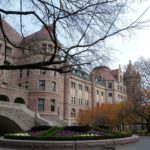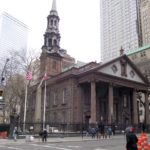It’s one of New York City’s most celebrated landmarks, but feel people know the real history behind it.
Rockefeller Center serves as the cultural and commercial heart of New York City. Built during the darkest days of the Great Depression, it soon became known as an iconic attraction and important cultural hub for the city. The complex is also notable for being the largest private development built in the United States at the time as well as for being a revolutionary mixed-use project that seamlessly blended office space with retail and cultural, artistic and recreational amenities, providing a blueprint that countless other developers have tried to emulate in the decades since. Here’s a quick look at the hidden history of Rockefeller Center in New York City.
The site of the development was bought by famed financier John D. Rockefeller, Jr. in 1928 and developed starting in 1930. Rockefeller had initially planned to construct a grand new opera house for the Metropolitan Opera but plans soon fell through due to the onset of the Great Depression and the opera’s continual holding out for better lease conditions. Rockefeller boldly decided to move ahead without them and finance the project himself in spite of the dire economic condition the country was in at the time.
Rockefeller forged ahead and redrew plans for the complex as a mixed-use “city within a city” that combined office and retail space with cultural amenities. Construction on the new complex – the largest private real estate development in the United States until the construction of Hudson Yards also in New York City almost a century later – began in earnest on May 17, 1930 and continued until 1939. When complete, the complex boasted 14 separate buildings as well as a robust retail component and cultural and open space.
At the behest of public relations expert and Rockefeller family advisor Ivy Lee, the new complex was dubbed “Rockefeller Center” in order to make it more attractive to tenants, although Rockefeller himself didn’t initially want his family name associated with the project. Despite the crippling effects of the Great Depression, the complex was able to find at least some new tenants when opened, particularly in radio and communications. 30 Rockefeller Plaza, now known as the Comcast Building, was initially known as the RCA Building in recognition of its inaugural anchor tenant. In the 1960s and 1970s, newer office buildings were also built, adding new office space to the complex in what’s often called the “XYZ Buildings” today.
The complex soon came to host many of the country’s most celebrated institutions and events. Radio City Music Hall hosts the famed Radio City Christmas Spectacular while the Rockefeller Center Christmas Tree helps to ring in the holiday season every year.
Nearly a century after it first broke ground, Rockefeller Center continues to be a touchstone of New York City culture and commerce. It’s iconic status and groundbreaking function make it one of the city’s most important and celebrated landmarks.






